How Graeter's, Aglamesis Bros. helped make Cincinnati the 'candy capital of the US'

Gifts for Valentine’s Day have traditionally been cards, flowers and heart-shaped boxes of candy.
And when it comes to sweets, Cincinnati has a rich history.
Whether it’s chunks of dark chocolate unearthed in a scoop of Graeter’s ice cream or the origins of famous candy makers from a century ago, there are many stories of the Queen City’s confection connections.
Consider this column a sampler box. Bite-sized pieces of chocolate candy history in Cincinnati.
Cincinnati was a candy town
Cincinnati food historian Dann Woellert wrote an entire book about the city’s candy history. “Cincinnati Candy: A Sweet History” covers the early candy barons, as he calls the most prominent confectioners, plus the city’s role in the beginnings of candy corn, candy canes, opera creams and Peeps.
Cincinnati, Woellert argues, was a candy town. He reports that the 1850 census showed Cincinnati had more confectioners than brewers.
“At one time, Cincinnati was the candy capital of the U.S.,” Lou Graeter, who ran Graeter’s candy operations, told the Cincinnati Post in 1981. “But candy sales really dropped off in the 1950s and many fine candy makers went out of business.”
Locals helped form the National Confectioners’ Association
Cincinnati’s candy barons played a major role in regulating the industry.
The Cincinnati Confectioners Association held a meeting of candy manufacturers from Ohio, Kentucky, Indiana and Michigan in January 1884 to set a price list for the candy trade. Other states also agreed to cooperate with the list.
That April, a convention took place in Chicago, where eight Cincinnati candy barons, including the Doscher Brothers, were among the 69 member companies that formed the National Confectioners’ Association.
The association oversaw quality control and regulation. One early task was to stop the practice of adulterating candy with harmful substitutes, such as terra alba, which was used as a cheap extender in candy but was indigestible.
Cincinnati hosted the 1886 convention at the Burnet House.
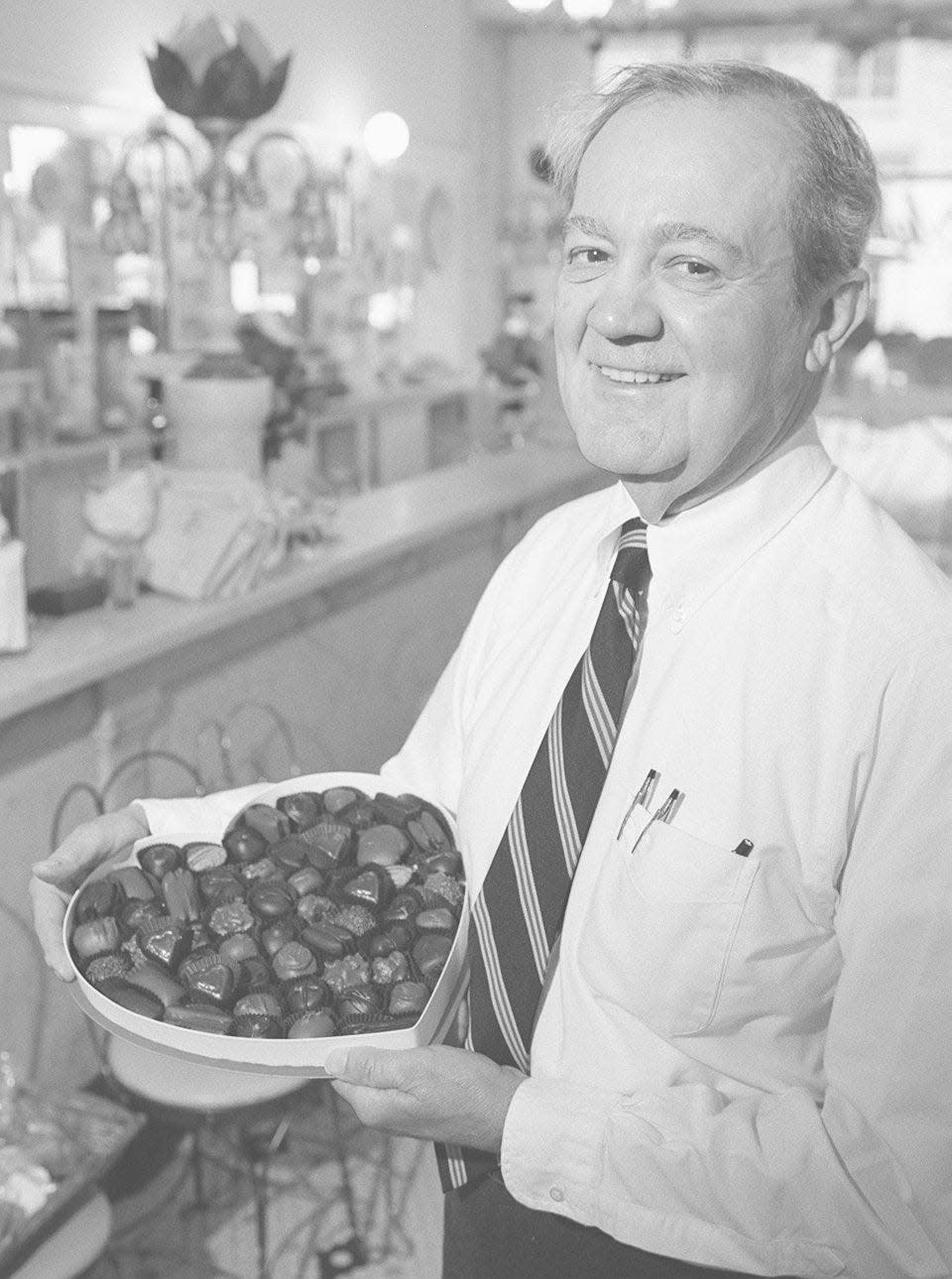
Aglamesis vs. Graeter’s
Aglamesis Bros. and Graeter’s are renowned for their highest-level ice creams in Cincinnati – and both have their devoted followers.
They have long been makers of quality chocolates as well.
Louis Graeter famously sold his small-batch French pot ice cream from a cart in 1870. But upon marrying his wife, Regina, in 1900, the couple opened a storefront at 967 E. McMillan St. in Walnut Hills, where they made chocolates and ice cream in the back of the store.
Candy making is still part of the Graeter’s business, but the bakery has taken on more of an emphasis over the years.
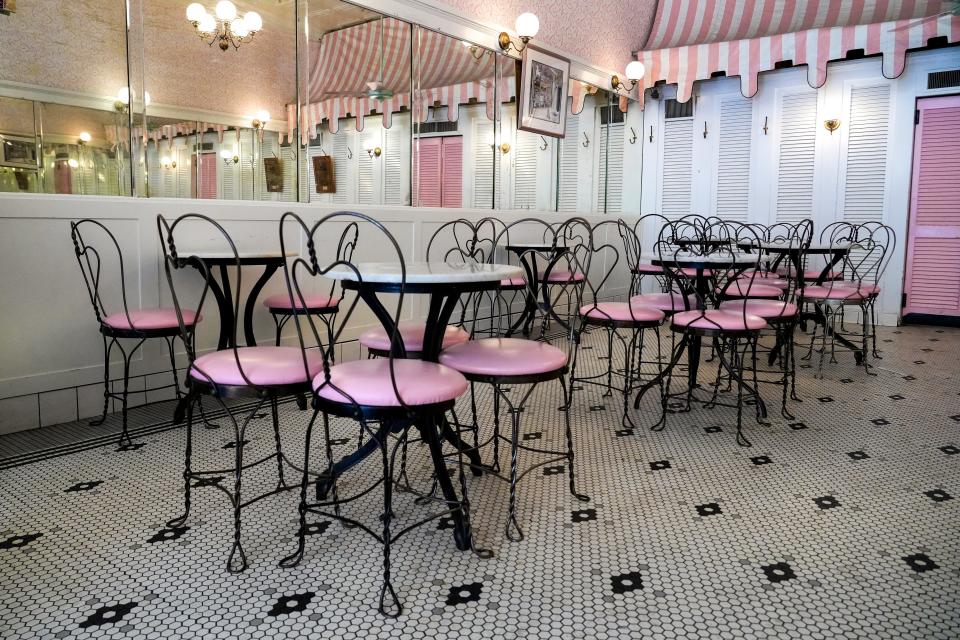
Thomas and Nicholas Aglamesis opened their first confectionery, the Metropolitan, in Norwood in 1908. A second store in Oakley opened in 1913 under the name Aglamesis Bros. That shop is still open today and looks straight out of the Gilded Age.
The family-run business still uses the same Old World recipes for its ice cream and gourmet chocolates.
What about Graeter’s chocolate chips?
As for those chunky chocolate chips in Graeter’s ice cream, they are made from 10-pound bars of gourmet bittersweet dark chocolate from Peter’s Chocolate, which was started by Daniel Peter in 1867 in Vevay, Switzerland.
“We take Peter’s Chocolate, melt it, pour it into French pots along with our ice cream, and then, using a paddle, chop it into our notoriously delicious chip-chunks,” said Robert Graeter, the chief of quality assurance, as quoted on the Peter’s Chocolates website.
Mullane’s fancy candy store
Mullane’s was one of the top names in Cincinnati candies for nearly 140 years.
Founded by William and Mary Mullane in 1848, Mullane’s began as a West End candy shop, which Mary ran with her sons after her husband’s death in 1863.
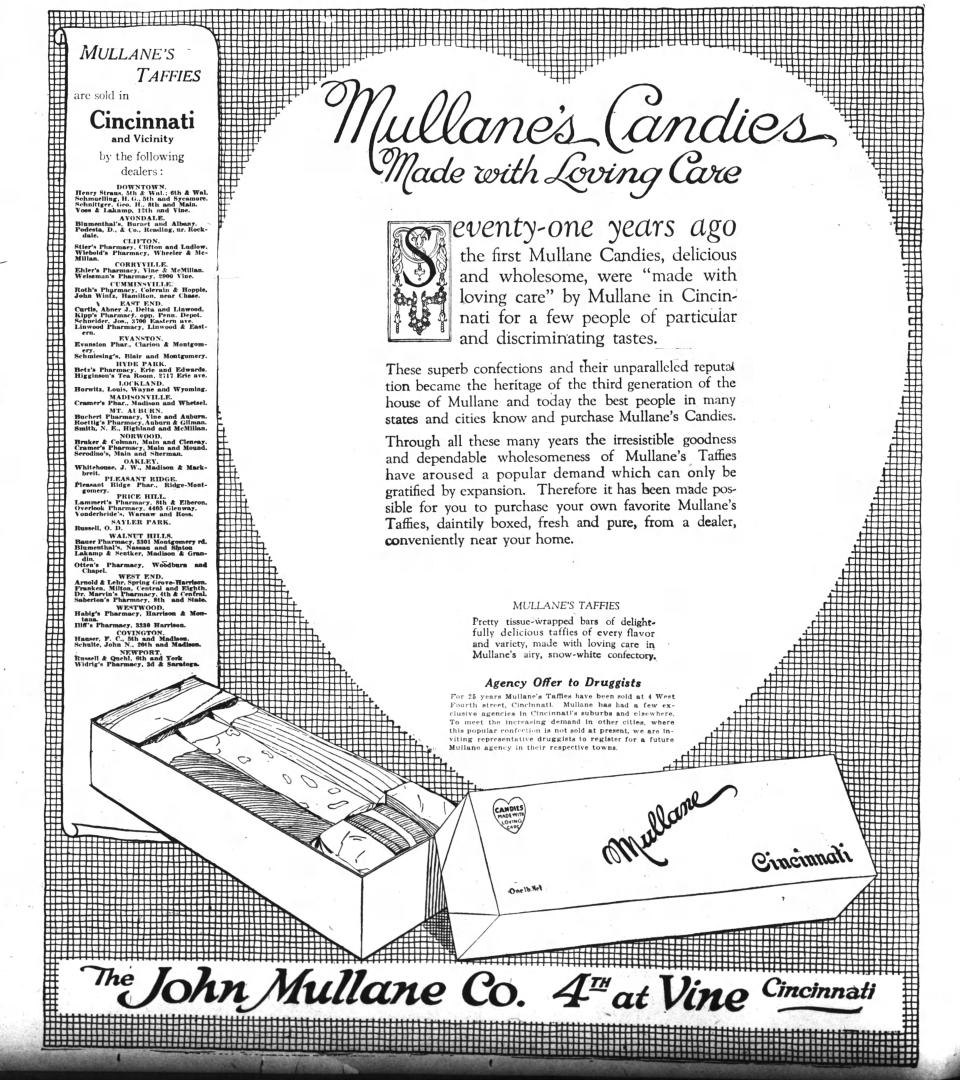
Her son John Mullane opened their signature store in the Herschede Building at 4 W. Fourth St., Downtown, in 1894. The Cincinnati Post described the ornate confectionery:
“One enters between columns sheathed in brass, based upon cubes of brown marble and topped with gilded Corinthian capitals. Underfoot is the most daintily tinted mosaic in Cincinnati.
“At each side is a display window of curved glass, gracefully proportioned and filled with a tasty and dazzling show. The windows have tops of crinkled cathedral glass, in which odd designs – starred, flowered and geometric – appear.
“Overhead is a truly artistic triumph – a stained glass ideal of round-limbed cherubs frolicking with glasses of soda water and gluttoning upon boxes of sweets.”
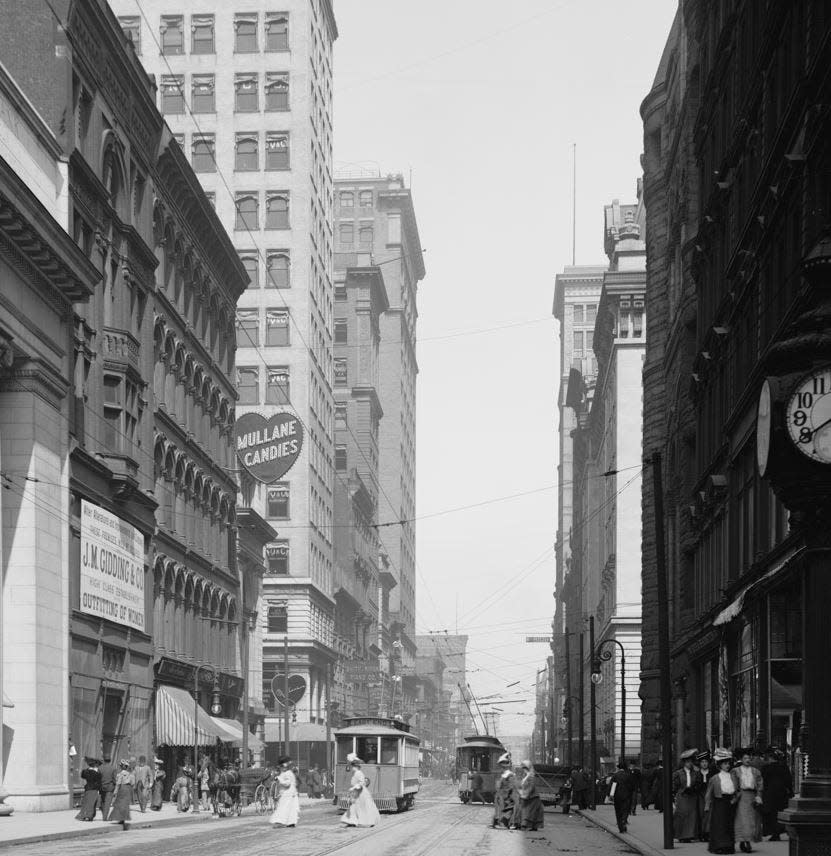
The long and narrow store featured a marble-topped soda fountain and a candy counter selling Mullane’s popular taffies, nectar drops and Woodland Goodies (brittle clusters) as well as chocolate bonbons and caramels.
Mullane’s moved out and down the street in 1933 (the Herschede Building is still there).
The next generation of Mullanes split the company, but the halves were purchased by former WSAI radio personalities George and Marilu Case and reunited in 1963. Brothers Richard and Charles Prince bought the candy brand in 1980 but closed their Northside store in 1985.
Bissinger’s French chocolates fit for a king
Bissinger’s, which used to have a storefront in the Carew Tower Arcade, had a genuine royal pedigree.
According to the company history, family records trace Bissingers working as chocolatiers to royalty in France as far back as the 17th century, crafting chocolates to dignitaries including Napoleon Bonaparte. The family was granted the title of Confiseur Imperial (Confectioner of the Empire) by King Louis XIV.
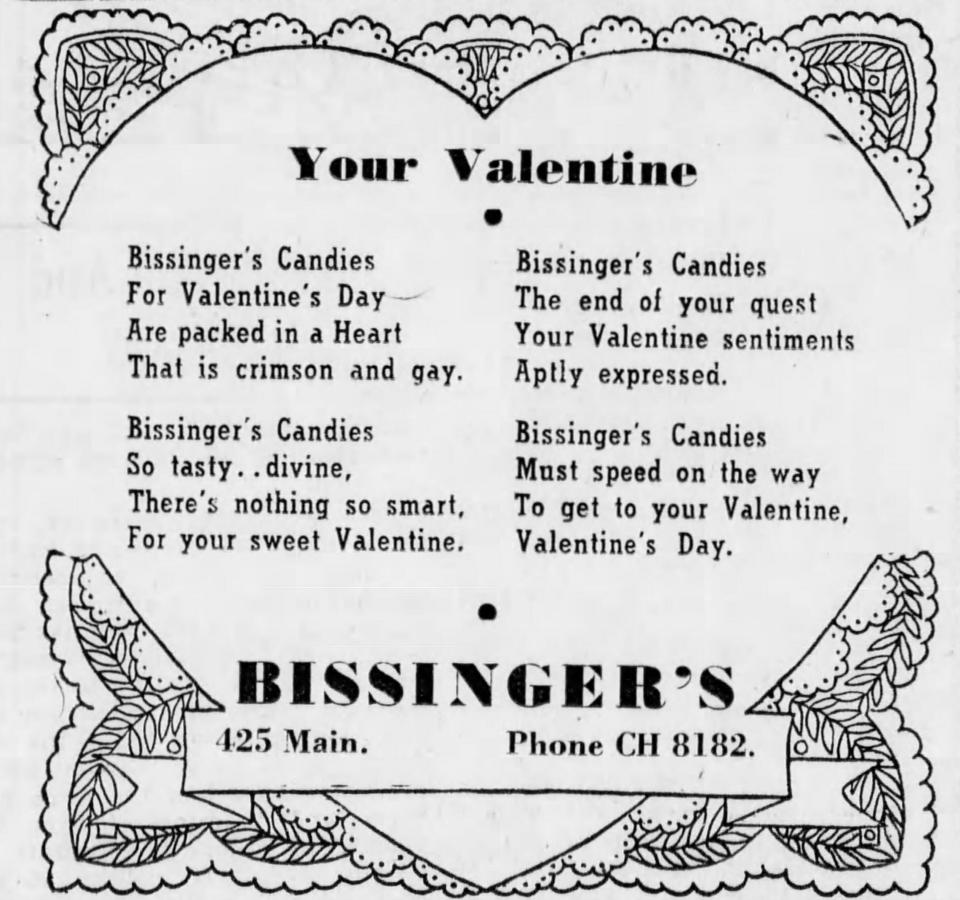
Frederick Bissinger left France in 1845 and eventually settled in Cincinnati, bringing manuscripts with the original recipes for hand-crafted French confections. He started his company in Cincinnati in 1863.
His son, Karl, branched out with his own candy kitchen in St. Louis in 1927, where the business continues today. Bissinger’s Carew Tower location closed in the late 1980s.
Opera creams from Cincinnati
Opera creams may be more of an Easter candy, but they may also be part of a valentine’s box.
The cream-filled chocolate confection has Cincinnati origins, but they are difficult to trace.
Advertisements in The Enquirer in the early 1900s include opera creams and opera cream caramels. In the 1920s, the Robert H. Putman Candy Co. claimed to be the originator “the world famous Cincinnati candy.” The Papas Candy Co. in Covington was the first to make them in egg shapes rather than rectangles.
While opera creams can sometimes be found outside of Cincinnati, locals swear that the Queen City’s are the best.
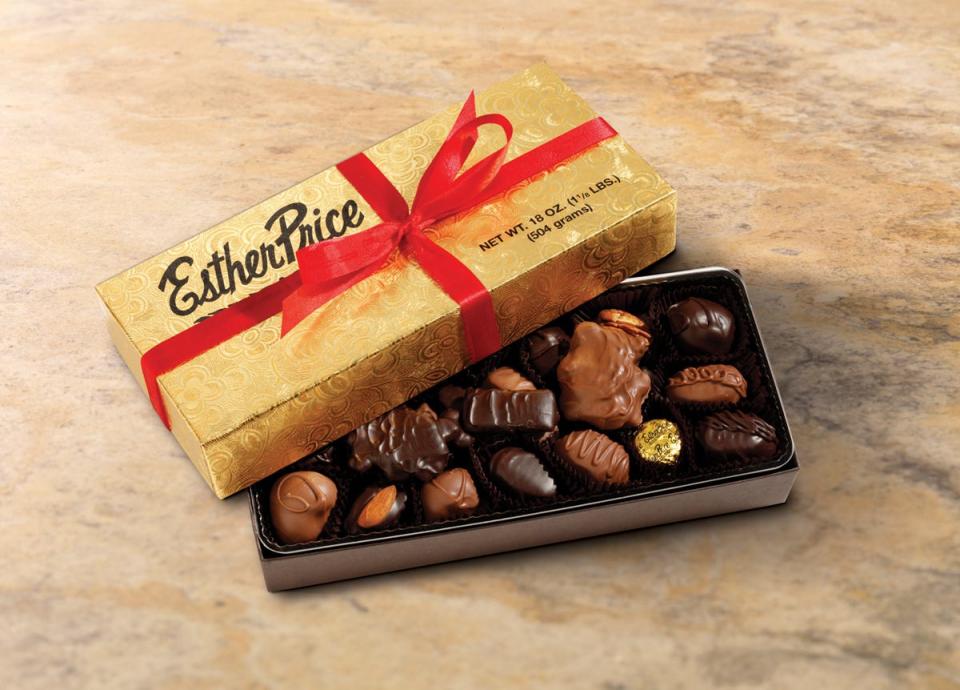
Esther Price was a real person
Esther Price Candies may be from Dayton, Ohio, but those gold boxes of chocolates do have a Cincinnati presence.
First off, yes, Esther Price was a real person – not a corporate symbol like, say, Betty Crocker.
Learning to make fudge in her home economics class in the 1920s ignited Price’s passion for making chocolates. She brought them to her co-workers at Rike’s department store in downtown Dayton, and they encouraged her to go into business in 1926.
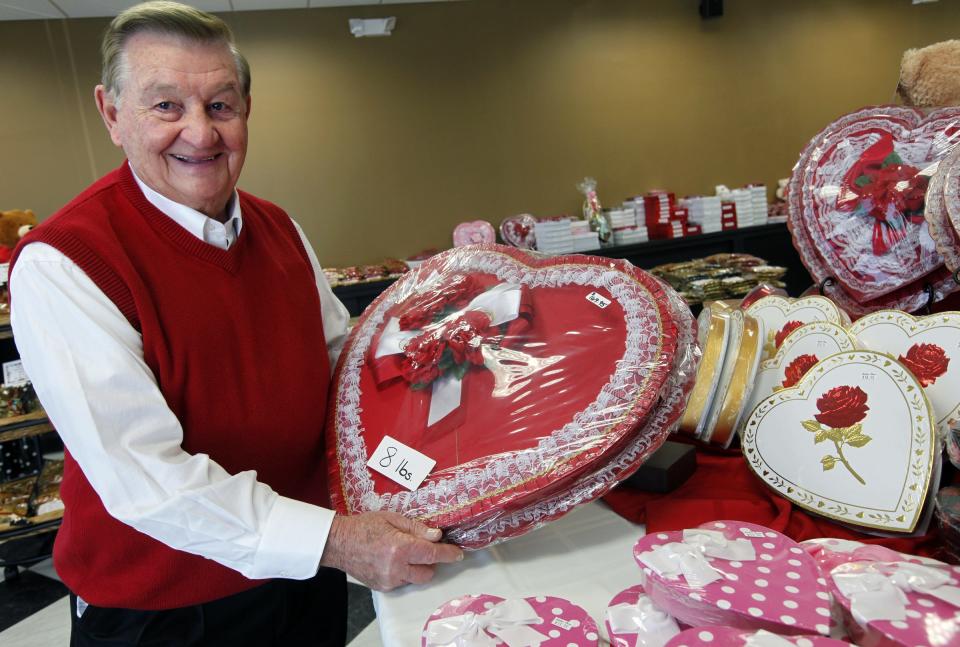
She soon built a candy factory around her house on Wayne Avenue in Dayton.
In the 1960s, Price expanded into the Cincinnati area, with a store first on Reading Road in Roselawn, then moved to Montgomery Road in Silverton.
An innocent gesture from Price raised a few eyebrows in 1968 when she thanked Silverton City Council for approving a study to allow parking near her store, then gave them boxes of chocolates.
Mayor Dick Benken said, “I hope the press handles this carefully,” as the surprised councilman accepted the candy.
Price retired in 1976 and sold her company for $2 million (roughly $11 million today) to four Cincinnati businessmen: Jim Day, Ralph Schmidt, Jim Bates and Joe Haarmeyer. Esther Price is still headquartered in Dayton, but there are stores in Kenwood, Bridgetown and West Chester.
Take this quiz to test your knowledge of Cincinnati history
This article originally appeared on Cincinnati Enquirer: Graeter's, Aglamesis Bros. made Cincinnati 'candy capital of the US'

